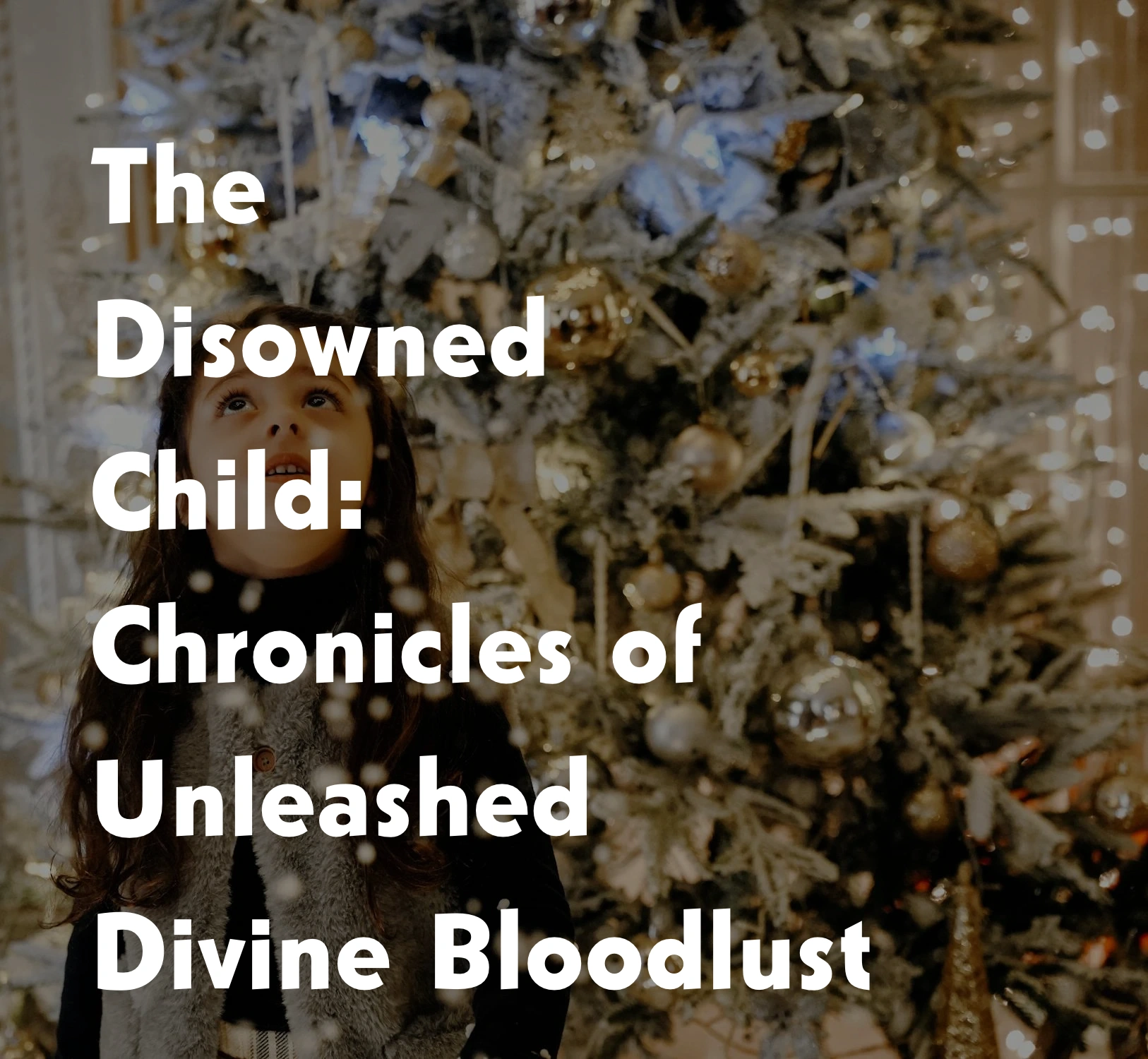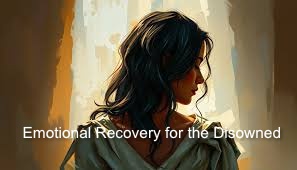The Disowned Child: Chronicles of Unleashed Divine Bloodlust

Explore About: The Disowned Child: Chronicles of Unleashed Divine Bloodlust
Among the rich tapestry of mythological and literary archetypes, the “disowned child” stands out as a poignant figure, grappling with the challenges of being neither fully human nor entirely divine. In The Disowned Child: Chronicles of Unleashed Divine Bloodlust, Jack Marcin. Kingsley reimagines this timeless archetype, blending mythology, fantasy, and profound emotional depth to craft an enthralling tale that resonates with universal truths.

Set in a world where the boundaries between reality and myth blur, Kingsley’s story follows Alaric, a protagonist navigating his newfound divine abilities and the turmoil they bring. This novel explores themes of identity, familial bonds, and the eternal struggle between destiny and free will, offering readers a narrative as layered as it is transformative.
Divine bloodlines carry extraordinary powers, often linked to ancient deities or supernatural forces. These bloodlines influence individuals’ lives, giving them abilities and responsibilities that can be both a blessing and a curse. Understanding these bloodlines requires looking at their origins, traits, and implications for those who inherit them.
Traits of Divine Bloodlines
| Trait | Description |
|---|---|
| Enhanced Strength | Superhuman physical power |
| Mental Agility | Superior intelligence and quick thinking |
| Elemental Control | Ability to influence natural elements |
| Immortality | Long lifespan or resistance to aging |
| Healing Power | Rapid recovery from injuries or illness |
These traits manifest differently depending on the individual and the lineage. Not every divine descendant exhibits all traits, but they usually show a combination of these abilities.
The Disowned Child: A Background

The story revolves around a child who was rejected by their divine family. This disownment often leaves scars, both emotional and physical. The child learns to survive without guidance, relying on their wits and raw potential. Over time, this isolation shapes them into a force to be reckoned with.
Challenges Faced by Disowned Children
| Challenge | Explanation |
| Lack of Guidance | No mentors to help develop their abilities |
| Social Isolation | Excluded from family and community |
| Emotional Trauma | Feelings of rejection and unworthiness |
| Uncontrolled Power | Struggles to manage inherited abilities |
| Constant Threat | Danger from those who fear or hate them |
Tips for Managing Inherited Powers
If you find yourself struggling with divine traits, here are practical tips to control and harness them effectively:
- Start Small: Begin by mastering minor abilities before tackling larger challenges.
- Example: If you control fire, practice lighting a candle before attempting a larger flame.
- Focus on Control: Learn to regulate emotions, as they often influence powers.
- Technique: Deep breathing exercises can help stabilize emotions.
- Seek Allies: Trustworthy friends can provide support and protection.
- Look for individuals with similar experiences or unique skills.
- Document Progress: Keep a journal to track improvements and identify patterns.
- Balance Strengths and Weaknesses: Understand your limits to avoid overexertion.
Alaric: The Embodiment of the Disowned Child

At the heart of the story is Alaric, a character who epitomizes the archetype of the disowned child with haunting authenticity. Kingsley weaves themes of self-discovery and familial estrangement, presenting Alaric as a young man abandoned by his parents upon the awakening of his divine powers. His transformation from an ordinary boy into a being grappling with supernatural abilities mirrors the disowned child’s journey to reconcile dual identities.
Alaric’s struggle with his divine bloodlust, an insatiable, beastly need to consume others, serves as a metaphor for humanity’s battle between primal instincts and moral values.
This conflict forms the emotional and thematic core of the narrative.
As Alaric learns to embrace his darker impulses while striving to become a better version of himself.
Themes and Symbolism
Identity and Self-Discovery
At its core, The Disowned Child is a meditation on identity. Alaric’s journey mirrors the universal quest for self-definition, as he confronts challenges that force him to reconcile his human vulnerabilities with his divine heritage. His path reflects the struggles many face in defining their purpose and embracing their true selves, offering readers a deeply relatable and introspective experience.
Family and Betrayal
Kingsley explores the painful complexities of familial relationships through Alaric’s rejection by his parents. This betrayal sets the stage for his journey, emphasizing how fear and misunderstanding can fracture bonds. The story underscores the resilience of the human spirit in the face of abandonment, ultimately portraying Alaric’s search for belonging and forgiveness as a powerful narrative of hope and reconciliation.
Destiny vs. Free Will
The tension between destiny and free will permeates the novel, as Alaric grapples with his role in a predestined divine order while yearning for autonomy. Kingsley deftly examines this age-old conflict, presenting a nuanced perspective that challenges readers to consider the balance between fate and self-determination.
Character Development
Alaric
Alaric’s growth is central to the novel, showcasing his transformation from a lost and rejected boy to a figure of strength and self-acceptance. His relationships with key characters, such as Alistair, his mentor, and Elara, his steadfast friend, enrich his journey, illustrating the importance of human connections in fostering personal growth.
Lady Seraphina
The enigmatic Lady Seraphina serves as a compelling antagonist, embodying the allure and danger of unchecked ambition. Her conflict with Alaric highlights the novel’s exploration of power dynamics and the moral dilemmas inherent in wielding great power. Kingsley’s portrayal of Seraphina is layered and nuanced, making her a memorable and thought-provoking villain
Impact on Readers
Captivating World-Building
Kingsley’s meticulous attention to detail brings the novel’s world to life, immersing readers in a vivid, richly imagined setting. From ancient cities to ethereal landscapes, the novel’s environments are as dynamic and engaging as its characters.
Emotional Depth
Beyond its fantastical elements, the novel delves into profound emotional territories, exploring themes of loss, resilience, and redemption. Alaric’s journey resonates deeply, offering readers moments of triumph and heartbreak that linger long after the final page.
Critical Acclaim and Legacy
The Disowned Child: Chronicles of Unleashed Divine Bloodlust has received widespread praise for its originality, depth, and emotional resonance. The novel has been recognized with several prestigious awards, including:
- The Mythic Prize for Best Fantasy Novel
- The Aurelia Award for Outstanding World-Building
- The Caliburn Award for Best New Author
Kingsley’s work has also sparked vibrant scholarly discourse, with critics analyzing its exploration of identity, mythological symbolism, and the complexities of human relationships. These discussions underscore the novel’s literary significance and enduring appeal.
Training Regimens for Power Development
Structured practice is essential for developing divine abilities. Below is a step-by-step training plan:
Weekly Training Plan
| Day | Activity | Goal |
| Monday | Meditation and Focus Training | Improve mental stability |
| Tuesday | Physical Strength Exercises | Enhance physical capabilities |
| Wednesday | Power Control Practice | Fine-tune abilities like elemental control |
| Thursday | Strategy and Planning | Develop problem-solving skills |
| Friday | Sparring with Allies | Learn to work with others in combat |
| Saturday | Rest and Reflection | Prevent burnout and assess progress |
| Sunday | Skill Integration | Combine various skills for real-world use |
Emotional Recovery for the Disowned

The pain of rejection can hold back progress. Addressing these emotions is vital:
- Acknowledge Feelings: Accept and name emotions without judgment.
- Example: Journaling can help process complex thoughts.
- Find Purpose: Identify personal goals to create a sense of direction.
- Question: What drives you beyond the pain?
- Build Confidence: Celebrate small achievements to boost self-worth.
- Action: Keep a list of accomplishments.
- Form Connections: Building new relationships can replace lost ones.
- Tip: Join groups with shared interests or goals.
- Seek Professional Help: Therapy or counseling can be transformative.
Avoiding Common Pitfalls
Mistakes can lead to setbacks or unintended harm. Be mindful of these pitfalls:
- Overconfidence: Pushing limits too quickly can lead to failure.
- Isolation: Cutting off others can worsen feelings of loneliness.
- Neglecting Basics: Forgetting fundamentals like rest and nutrition can hinder growth.
- Ignoring Feedback: Valuable insights from allies can improve outcomes.
- Using Power for Revenge: This can create more enemies and escalate problems.
Preventative Measures
| Pitfall | Solution |
| Overconfidence | Regularly assess limits |
| Isolation | Maintain at least one trusted ally |
| Neglecting Basics | Set reminders for meals and rest |
| Ignoring Feedback | Actively seek advice from mentors |
| Using Power for Revenge | Focus on constructive goals |
Developing Unique Strategies
Success often comes from innovation. Create strategies tailored to your specific abilities and challenges.
Example Strategies
| Scenario | Suggested Strategy |
| Ambush Attack | Use heightened senses to detect threats |
| Resource Scarcity | Rely on healing power to sustain longer |
| Hostile Environment | Adapt elemental control to conditions |
| Conflict with Others | Use mental agility to outwit opponents |
Conclusion

The journey of a disowned child with divine blood is fraught with challenges but also filled with opportunities for growth and transformation. By addressing emotional wounds, training effectively, and avoiding common mistakes, individuals can harness their unique abilities and find a new path forward. With resilience and determination, they can rewrite their story and prove their worth.
Frequently Asked Questions (FAQs)

What are the common signs of a divine bloodline?
Enhanced physical strength, mental sharpness, and unusual abilities like elemental control are typical signs. Individuals may also show rapid healing and resistance to aging.
How can a disowned child reconnect with their divine family?
Reconnection is complex but often involves proving their worth through courage, resilience, and demonstrating control over their abilities.
What should I do if I cannot control my inherited powers?
Start with small practices, seek guidance from experienced individuals, and focus on emotional regulation techniques like meditation.
Are there risks in seeking allies to help with divine traits?
Yes, trust is essential. Ensure allies have good intentions and shared goals to avoid betrayal or exploitation.
Can a disowned child overcome emotional trauma on their own?
While self-help strategies like journaling and reflection are useful, professional counseling or therapy can significantly aid recovery.
